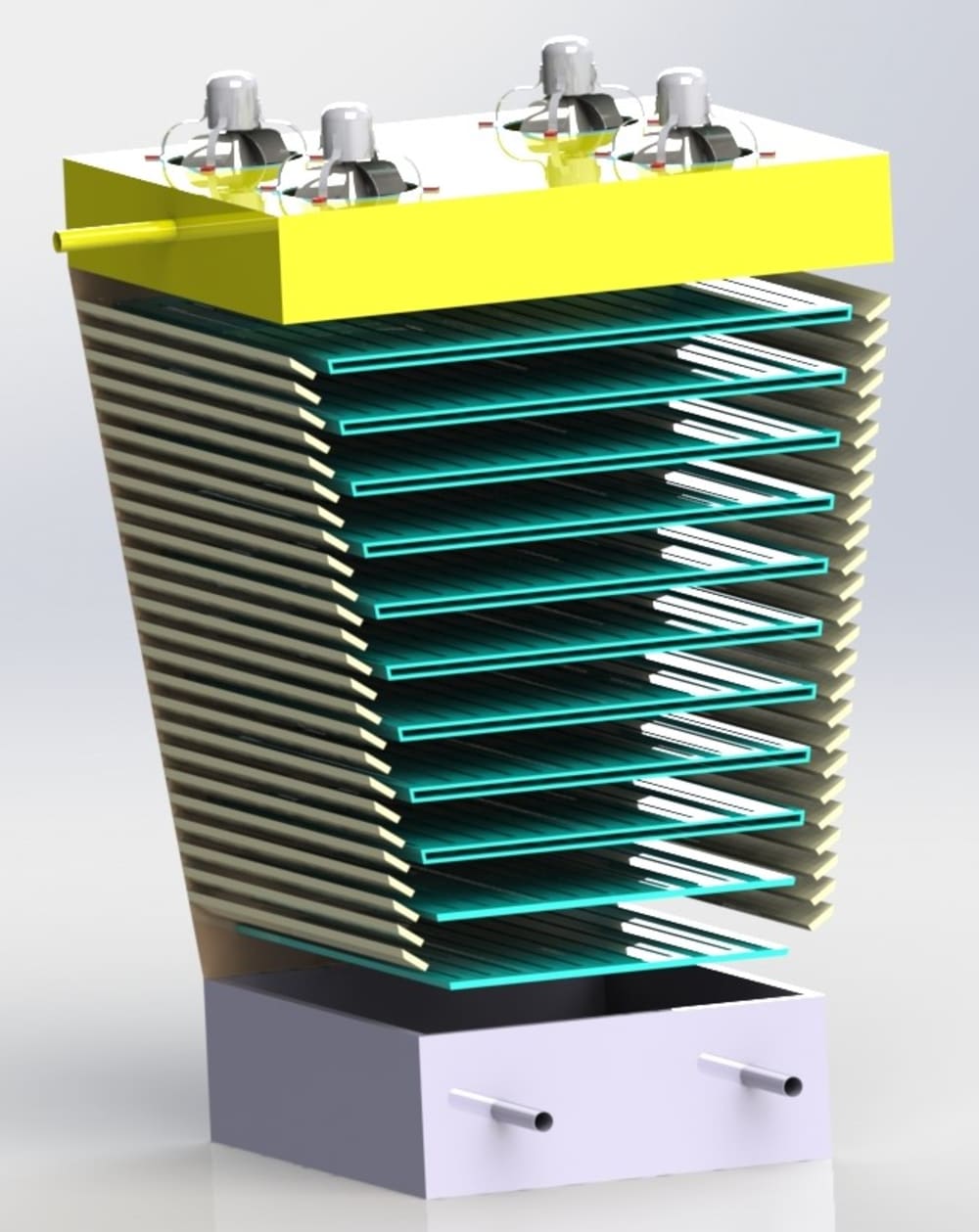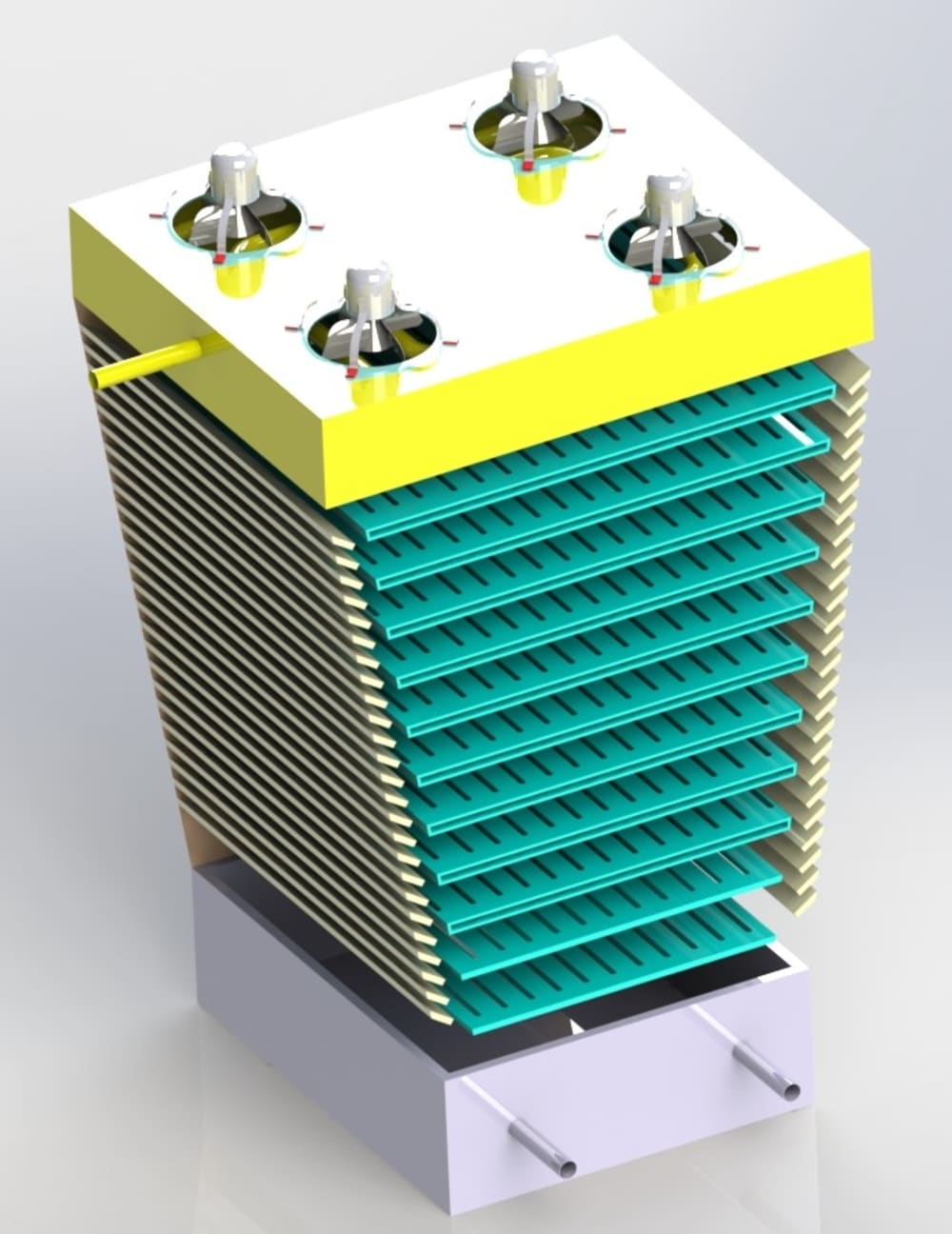An evaporative cooling tower is a heat exchanger where transformation of heat takes place from circulating water to the atmosphere. The warm water from the condenser is taken as an inlet water to the cooling tower and it is allowed to flow through the nozzles. As it falls down across baffles or louvers, the water is broken into small droplets. Simultaneously air is drawn in through the air inlet louvers provided at the base of the tower and then this air travels upward through the tower in the opposite direction of water flow. In this process a small portion of water gets evaporated which removes the heat from the remaining water causing it to cool down. This water is collected in a basin and is reused in the cooling water system process. Because of evaporation, some quantity of water is lost and thus to make up the loss, the fresh water is constantly added to the cooling water basin. In a Natural Draft Cooling Tower, warm water is cooled by evaporation process. Here, water gets cooled when a boundary layer is formed between saturated water and saturated air. If the mass flow rate is ideal, then the performance of cooling tower as well as the power plant will be improved. In this study, it is showed that by minimizing the size of water droplet, the performance of Natural Draft Cooling Tower can be enhanced.
Study of Sensitivity Analysis is done which shows the dependency of parameters like air temperature, water temperature, relative humidity and rate of heat loss. Further, efficiency is also checked by using power generation data.
Like this entry?
-
About the Entrant
- Name:Ritesh Kumar Srivastava
- Type of entry:teamTeam members:Akash Kulsherstha Sadiq Rayeen
- Software used for this entry:solidwork
- Patent status:none








